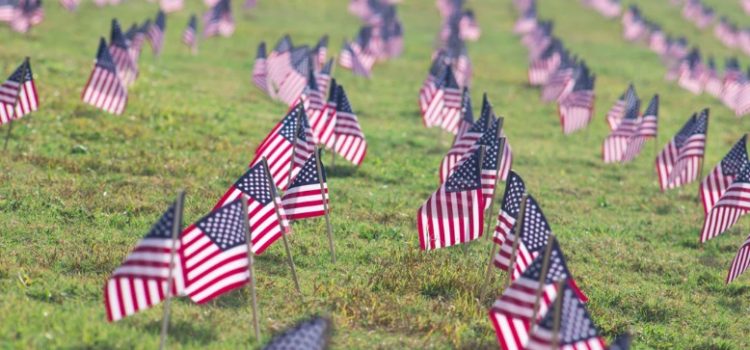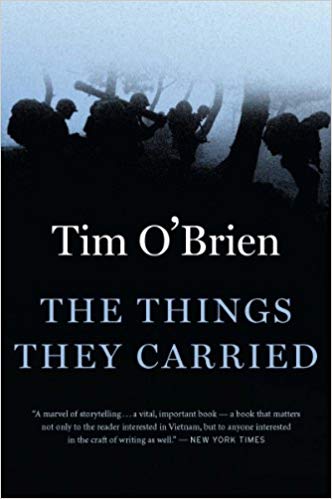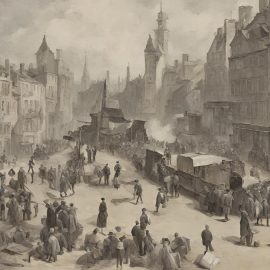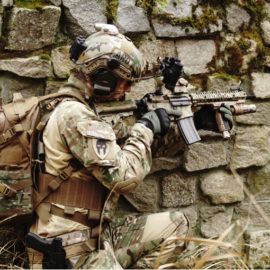

This article is an excerpt from the Shortform summary of "The Things They Carried" by Tim O'Brien. Shortform has the world's best summaries of books you should be reading.
Like this article? Sign up for a free trial here .
How is the power of storytelling depicted in Tim O’Brien’s The Things They Carried? How can the power of storytelling help assuage the wounds of war?
We’ll cover how Tim O’Brien uses semi-fictional stories of the Vietnam War to demonstrate how powerful storytelling can be in conveying the brutality of war and reviving those long gone.
Editor’s note: This article is part of Shortform’s guide to storytelling. If you like what you read here, there’s plenty more to check out in the guide!
The Power of Storytelling
A frequent theme throughout the book is how telling fictionalized narrative stories brings true experiences alive. O’Brien discusses the difference between happening-truth and story-truth. Happening-truth is just the literal recounting of events that happened, while story-truth is imbued with fictional or exaggerated elements. Story-truth, however, is more real, because its sensationalized features more fully convey to the reader the emotional power of what happened. Stories can be truer than truth. This is the power of storytelling.
O’Brien experiments with this theme throughout the book, by relating emotionally traumatic episodes to us (like his killing of a young Vietnamese soldier), only to reveal to us later in the narrative that they did not actually happen the way he told us. Nevertheless, the stories are “true” because they convey to us what it felt like for O’Brien to be in these situations in a way that the literal truth (or happening-truth) never could.
He notes that true war stories aren’t parables—they’re not meant to instruct, impart morals, serve as examples of good conduct, generalize, or engage in abstraction. This isn’t the power of storytelling. What makes the story true is the reaction it produces, not the content itself. Thus, something may happen and still be a complete lie, while another thing may be pure fiction and yet truer than the actual truth.
For O’Brien, a writer, storytelling is an act of both catharsis and resurrection. He can process his own war experiences and make sense of them by reshaping them into a narrative. But he can also see the dead again, make them smile and speak. He likens his characters to books on a library shelf that haven’t been checked out for a long time. They are lying dormant, waiting for him to check them out and bring them to life once more—to make them immortal through storytelling. Immortalizing its subjects is part of the power of storytelling.
Truth and Fiction
Looking back after Vietnam, O’Brien ponders what makes a “true” war story. He notes that true war stories aren’t parables—they’re not meant to instruct, impart morals, or serve as examples of good conduct. True war stories also don’t generalize or engage in abstraction. Even adages like “war is hell” are unbelievable to O’Brien because they lack the gut-punch sensation and raw disgust that such a story is meant to provoke. What makes the story true is the reaction it produces, not the content itself. Thus, something may happen and still be a complete lie, while another thing may be pure fiction and yet truer than the actual truth.
True war stories instead convey the emotional weight of the war experience. As such, obscenity and cruelty are central elements of this kind of storytelling because war is an obscene, vile, and dehumanizing experience. The power of storytelling comes in conveying this.
O’Brien thinks about how he has made the transition from Vietnam to the world after. He has done this by telling stories, which he likens to clearing the throat. Storytelling enables him to clarify and make sense of his experiences, objectifying them and separating them from himself.
Power of Storytelling and Linda’s Death
O’Brien tells the story of how his childhood girlfriend, Linda, died of cancer at age nine. His experience with Linda was O’Brien’s first glimpse into the power of storytelling. After her death, he began to invent elaborate stories in which Linda was still alive. His dreams and his stories became his secret meeting place with his lost friend. He could bring Linda to life again by telling her story. He could make her real, make her smile and speak. In one of his dreams, the dead Linda likened herself to an old book on a library shelf that hadn’t been checked out for a long time. All she could do was wait for someone to check her out—for someone to tell her story and bring her to life again.
Even amid the brutality of the war, the men were always telling stories about the dead to make them seem more vivid and present. This was how the line between story-truth and happening-truth became blurred. The more vivid the stories were, the more alive and of this world the dead seemed to be. If they could tell stories about Curt Lemon trick-or-treating through a rural Vietnamese village or Ted Lavender being sedated on tranquilizers, it was almost as if they weren’t gone. Like with Linda, storytelling brought the body and soul together.
———End of Preview———

Like what you just read? Read the rest of the world's best summary of "The Things They Carried" at Shortform . Learn the book's critical concepts in 20 minutes or less .
Here's what you'll find in our full The Things They Carried summary :
- What the Vietnam War was like for soldiers on the ground
- How Vietnam soldiers dealth with the psychological stress of death around them
- How fictional stories can be truer than the truth






